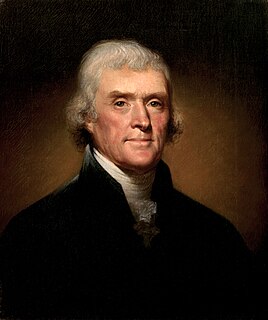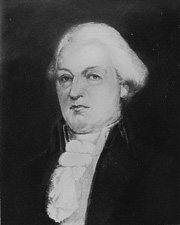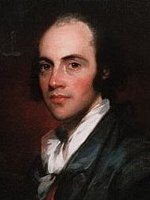
The 1800 United States presidential election was the 4th quadrennial presidential election. It was held from October 31 to December 3, 1800. In what is sometimes referred to as the "Revolution of 1800", Vice President Thomas Jefferson of the Democratic-Republican Party defeated incumbent President John Adams of the Federalist Party. The election was a political realignment that ushered in a generation of Democratic-Republican leadership.

The 1804 United States presidential election was the 5th quadrennial presidential election, held from Friday, November 2, to Wednesday, December 5, 1804. Incumbent Democratic-Republican President Thomas Jefferson defeated Federalist Charles Cotesworth Pinckney of South Carolina. It was the first presidential election conducted following the ratification of the Twelfth Amendment to the United States Constitution, which reformed procedures for electing presidents and vice presidents.

The 1792 New York gubernatorial election was held in April 1792 to elect the Governor and Lieutenant Governor of New York.

The 1789 United States Senate election in New York was held in July 1789 to elect two U.S. Senators to represent the State of New York in the United States Senate. It was the first such election, and before the actual election the New York State Legislature had to establish the proceedings how to elect the senators.

The 1797 United States Senate election in New York was held on January 24, 1797, by the New York State Legislature to elect a U.S. Senator to represent the State of New York in the United States Senate. Incumbent Senator Aaron Burr's name was not placed into nomination for a second term. Former Senator Philip Schuyler was elected.

The first 1798 United States Senate special election in New York was held on January 11, 1798, by the New York State Legislature to elect a U.S. Senator to represent the State of New York in the United States Senate.

The second 1798 United States Senate special election in New York was held on August 17, 1798, by the New York State Legislature to elect a U.S. Senator to represent the State of New York in the United States Senate.
The 1802 United States Senate special election in New York was held on February 9, 1802, by the New York State Legislature to elect a U.S. Senator to represent the State of New York in the United States Senate.

The 1803 United States Senate election in New York was held on February 1, 1803, by the New York State Legislature to elect a U.S. Senator to represent the State of New York in the United States Senate.

The 1813 United States Senate election in New York was held on February 2, 1813, by the New York State Legislature to elect a U.S. Senator to represent the State of New York in the United States Senate.

The 1819/1820 United States Senate election in New York was held on February 2, 1819, and January 8, 1820, by the New York State Legislature to elect a U.S. Senator to represent the State of New York in the United States Senate.
The 1790 and 1791 United States Senate elections were the second series of elections of senators in the United States. In these elections, terms were up for the nine senators in Class 1. As of these elections, formal organized political parties had yet to form in the United States, but two political factions were present: The coalition of senators who supported President George Washington's administration were known as the Pro-Administration Party, and the senators against him as the Anti-Administration Party.

The 1790 United States House of Representatives elections in New York were held from April 27 to 29, 1790, to elect six U.S. Representatives to represent the State of New York in the United States House of Representatives.

The 1788 and 1789 United States Senate elections were the first elections for the United States Senate, which coincided with the election of President George Washington. As of this election, formal organized political parties had yet to form in the United States, but two political factions were present: The coalition of senators who supported George Washington's administration were known as "Pro-Administration", and the senators against him as "Anti-Administration".

The 13th New York State Legislature, consisting of the New York State Senate and the New York State Assembly, met from July 6, 1789, to April 6, 1790, during the thirteenth year of George Clinton's governorship, first in Albany, then in New York City.

The 14th New York State Legislature, consisting of the New York State Senate and the New York State Assembly, met from January 5 to March 24, 1791, during the fourteenth year of George Clinton's governorship, in New York City.

The 15th New York State Legislature, consisting of the New York State Senate and the New York State Assembly, met from January 5 to April 12, 1792, during the fifteenth year of George Clinton's governorship, in New York City.

The 16th New York State Legislature, consisting of the New York State Senate and the New York State Assembly, met from November 6, 1792, to March 12, 1793, during the sixteenth year of George Clinton's governorship, in New York City.

The 19th New York State Legislature, consisting of the New York State Senate and the New York State Assembly, met from January 6 to April 11, 1796, during the first year of John Jay's governorship, in New York City.

The 20th New York State Legislature, consisting of the New York State Senate and the New York State Assembly, met from November 1, 1796, to April 3, 1797, during the second year of John Jay's governorship, first in New York City, then in Albany.










